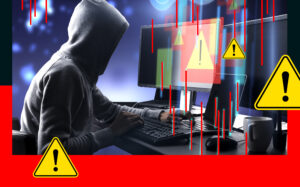Sins on the net: Spam
You arrived at the office in the morning, earlier than usual, because you know that an important email should be waiting in your mailbox for which you have been waiting for several days - the continuation of the project you are working on depends on this email. You open your email inbox and several dozen new messages spill out onto the floor. After you sort out the mountains of messages, send to the recycle bin some advertisements, tempting offers, promotions, reports on websites for adults only and a number of miraculous ways to get rich overnight - you actually realize that the message you were waiting for is not in the mailbox at all. When you check the messages on the answering machine you will find an annoying message that the sender of the email could not send it because the box was blocked due to overload. Good Morning.
"Spam", junk mail, is sending identical email messages to thousands (or millions) of recipients at the same time. The contents of the messages range from marketing or pornographic content to job offers, get-rich-quick methods, chain letters, and more. What all spam messages have in common is that the recipient of the message does not know the sender and never asked to receive the message.
Internet providers around the world as well as email service providers are fighting an uphill battle against spammers, and yet - the junk keeps coming. Why do spammers work so hard to send their messages? Why are they sabotaging, day after day, the effectiveness of one of the most common methods of communication in the world today? The reason is simple and not surprising - money. greed. Many believe that advertising by harassing email users works, and they are willing to pay a lot of money to get it.
Internet surfers are under a constant attack of spam - millions of spam messages are sent over the Internet every year. According to data from SpamCop.net, a site that deals with the fight against spam, in the last 12 months (September 2004 to September 2005) an average of 4.7 spam messages were reported every second, up to a peak of almost 29 messages per second in January. A total of 146,647,251 spam messages were reported to the site in the last year.
AOL data is much more serious and indicates 10 million spam messages each day (30% of total messages), all to people who never asked to receive them.
Where does all this junk come to our computers? From third world countries where enforcement and supervision are low? Not necessarily. 42.1% of the junk mail in 2004 actually came from the USA, while South Korea is in second place on the list of defendants with 13.4 percent, and the top five are completed by China, Canada and Brazil.
What can be done to eliminate spam? The answer is divided into two - the prevention phase, and the fight phase. The prevention step is short and simple - prevent at all costs from entering your email address on all kinds of websites that ask for it in order to register for free for any service. Create a new, free e-mail address for yourself on a site such as Hotmail or Gmail - and use it to register on the sites - you will be surprised to find out how quickly the spam messages will start to flood the new box. When the spam messages become unbearable - cancel the box and create a new one.
The struggle phase is more complex and requires more complex technological means. Most of the defensive work should be done by network administrators and ISPs using anti-spam software (Anti Spam) and mail-filters. New mail programs such as Outlook xp or 2003 provide convenient tools for organizing a list of spam senders and automatic identification of mail suspected as spam. But this is only passive defense.
Instead of fortifying yourself behind the walls and waiting for spam bombardments, there is also an active side to the war - reporting the spammers. By means of surfers' reports on received spam messages, entities that fight against criminals can locate the source of the messages and report it to the Internet providers so that they block the mail senders. Certain entities even create "blacklists" of spammers so that mail server owners can help them in order to defend against spam attacks.
Undoubtedly the easiest way is to ignore the messages and hope that the flood of spam messages does not reach our mailbox.
But, in order to fight the phenomenon, make it unprofitable for spam criminals and eliminate them once and for all - we must
Surfers to join the fight for the future of e-mail and free communication.
You may be interested in:

החשיבות של סריקות פגיעויות באבטחת סייבר

הכוח של ניטור הרשת האפלה באבטחת מידע

התיקון ה-13 לחוק הגנת הפרטיות

אבטחת מידע בענן

הרמת כוסית ראש השנה 2024






